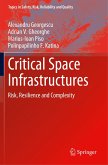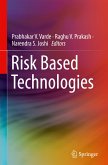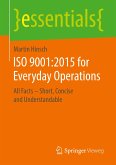This book introduces readers to the latest findings on disaster robotics. It is based on the ImPACT Tough Robotics Challenge, a national project spearheaded by the Japan Cabinet Office that focuses on developing robotics technologies to aid in disaster response, recovery and preparedness. It presents six subprojects that involve robot platforms and several component technologies used in conjunction with robots:
cyber rescue canines, which are digitally empowered rescue dogs;
serpent-like robots for searching debris;
serpent-like robots for plant/infrastructure inspection;
UAVs for gathering information on large areas struck by disaster;
legged robots for plant/infrastructure inspection in risky places; and
construction robots for recovery tasks that require both power and precision.
The book offers a valuablesource of information for researchers, engineers and practitioners in safety, security and rescue robotics, disaster robotics, and plant and infrastructure maintenance. It will also appeal to a wider demographic, including students and academics, as it highlights application scenarios and the total concept for each robot in various scientific and technical contexts.
In addition to a wealth of figures and photos that explain these robots and systems, as well as experimental data, the book includes a comprehensive list of published papers from this project for readers to refer to. Lastly, an external website offers video footage and updated information from the International Rescue System Institute.
cyber rescue canines, which are digitally empowered rescue dogs;
serpent-like robots for searching debris;
serpent-like robots for plant/infrastructure inspection;
UAVs for gathering information on large areas struck by disaster;
legged robots for plant/infrastructure inspection in risky places; and
construction robots for recovery tasks that require both power and precision.
The book offers a valuablesource of information for researchers, engineers and practitioners in safety, security and rescue robotics, disaster robotics, and plant and infrastructure maintenance. It will also appeal to a wider demographic, including students and academics, as it highlights application scenarios and the total concept for each robot in various scientific and technical contexts.
In addition to a wealth of figures and photos that explain these robots and systems, as well as experimental data, the book includes a comprehensive list of published papers from this project for readers to refer to. Lastly, an external website offers video footage and updated information from the International Rescue System Institute.








